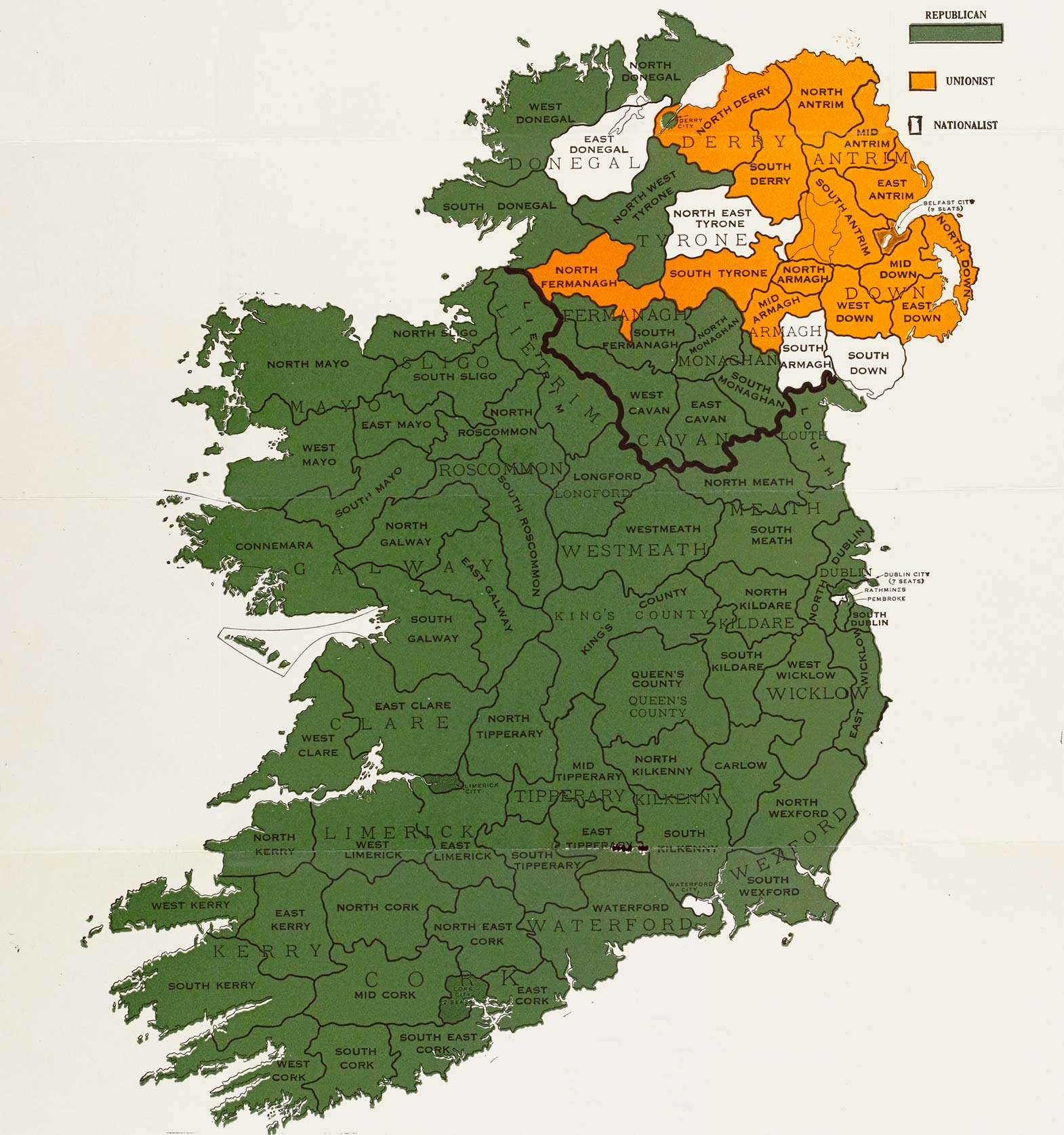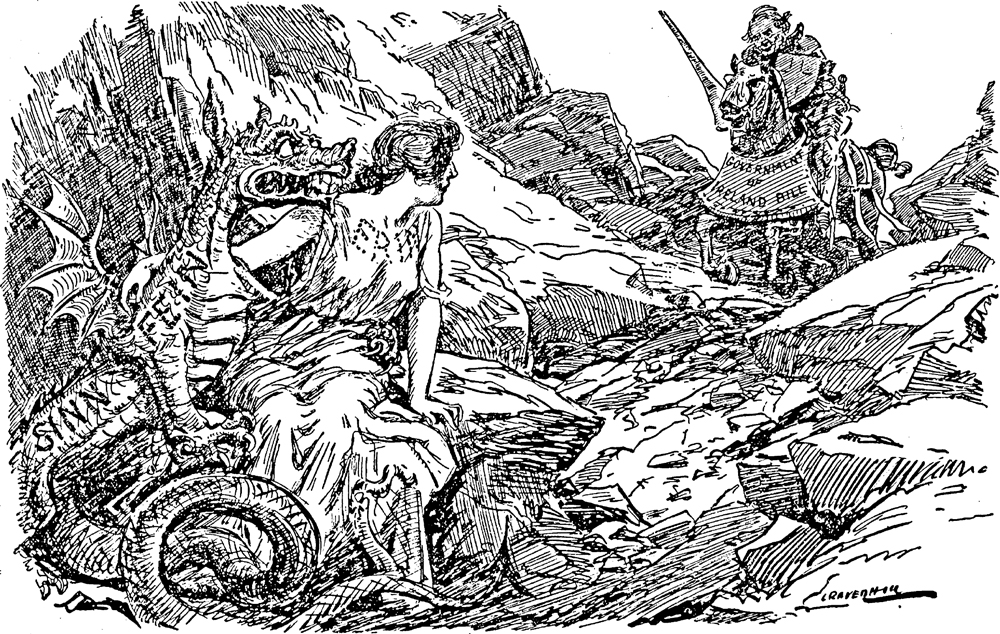Lloyd George announces home rule plans with partition
Westminster, 27 December 1919 - The British government has announced plans for the partition of Ireland as part of a home rule scheme that has drawn criticism from both nationalists and unionists.
The scheme was introduced by the Prime Minister David Lloyd George to parliament on 22 December against the backdrop of the attempted assassination of the Irish Viceroy, Lord French. Lloyd George opened his lengthy House of Commons speech by acknowledging that such a context was not the most favourable one in which to promote a measure of reconciliation.
Introducing the substance of his government’s proposal the Prime Minister outlined some of the factors that contributed to the adoption of the proposals:
'First, the impossibility of severing Ireland from the United Kingdom; second, the opposition of nationalist Ireland to British rule in Ireland; and third, the opposition of the population of north-east Ulster to Irish rule. The first involves the recognition that Ireland must remain an integral part of the United Kingdom. The second involves the conferring of self-government upon Ireland in all its domestic concerns. The third involves the setting up of two parliaments, and not one, in Ireland. That is the first proposal which we mean to recommend to parliament – that there should be two legislatures set up in Ireland. One will be the Parliament of Southern Ireland; the other will be the Parliament of Northern Ireland.’
The proposals do not confirm the boundaries of these legislative territories, but the Prime Minister outlined that four proposals had been discussed.
‘The first is that the whole of Ulster should form one unit, and the other three provinces should form the other units of self-government. The objection to that is that it would leave a large area where there is a predominantly catholic and celtic population in complete sympathy with the southern population. The second suggestion is county option. The objection to that is that it would leave solid communities of protestants who are in complete sympathy with the north-eastern section of Ireland outside, under a government to which they are rootedly hostile...The next suggestion is that these north-eastern counties should form a unit. There is the same objection to that, because there are solid catholic communities in at least two of these counties which are coterminous with the southern population; and it would be undesirable from the point of view of the north-eastern province to attach them to the Ulster parliament. The fourth suggestion is that we should ascertain what is the homogeneous north-eastern section, and constitute it into a separate area, taking the six counties as a basis, eliminating, where practicable, the catholic communities, whilst including protestant communities from the coterminous Catholic counties of Ireland, in order to produce an area as homogeneous as it is possible to achieve under these circumstances. So much for the areas which will be the basis of the constitution of these two parliaments.’
He appealed, not only to the House of Commons, but to the Irish people and to everyone else concerned with Ireland, to give the proposals fair consideration. He acknowledged that ‘there have been mistakes, there have been follies, there have been crimes on both sides; and we want that chapter to be closed for ever.’ He concluded by saying that the government's hand was not being forced by the current state of unrest in Ireland, but rather they were motivated by a 'deep sense of justice and right’.
Prof. Alvin Jackson explains what the Irish Parliamentary Party did after the 1918 general election
Reaction
The Irish Independent summed up Irish nationalist opinion
to the proposals: ‘We despise and reject them, and we are
glad to observe that the Irish press almost unanimously regards as
foredoomed to failure.’
Arthur Griffith outlined Sinn Féin’s opposition to
the proposals last week.
The view within unionist circles in Dublin is similarly critical. Lord Midleton, president of the Irish Anti-Partition League, has said that the proposals will be rejected on the grounds that ‘They involve complete and permanent partition; and as to the two distinct Parliaments with their cumbrous machinery they would lead to a duplication of departments in a country which is already overburdened in this respect.’
Speaking to the Belfast Newsletter, Charles Grierson, Anglican Bishop of Down, Connor and Dromore, said that the bill will ‘please nobody’, a view that was echoed by Rev. John Irwin, former Moderator of the Presbyterian General Assembly. ‘It seems to me that to propose a scheme that nobody wants and that has been rejected beforehand by three-fourths of the people concerned is about the limit of the absurd.’
The Newsletter has accused the British government of rushing to a crisis that could only be resolved by civil war. The Northern Whig is no less astonished by the ‘absolutely discreditable’ cabinet proposal to hand over the Irish police force to the ‘tender mercies of the men who have been engaged in a war of assassination on its members’.
In contrast, Hugh MacDowell Pollock, Chairman of the Belfast Harbour Board has said that the bill ‘goes as far to preserve the fundamental unity of the United Kingdom as it is possible to do under any scheme of devolution. The reservation of fiscal matters to the Imperial authority answers that there will be no partition of northern or southern Ireland. It also ensures that no fiscal barriers can be established between Great Britain and Ireland, so that the free interchange of commodities will be continued undisturbed.’ Mr Pollock added that the delineation of the northern territory will nevertheless be a matter of considerable difficulty.
It is expected that the Edward Carson-led Ulster Unionist Council will be generally supportive of the measure.

A constituency map showing the results of the 1918 general election. This might give a good indication of what counties will fall under the new Ulster parliament (Image: National Library of Ireland)
[Editor's note: This is an article from Century Ireland, a fortnightly online newspaper, written from the perspective of a journalist 100 years ago, based on news reports of the time.]





















